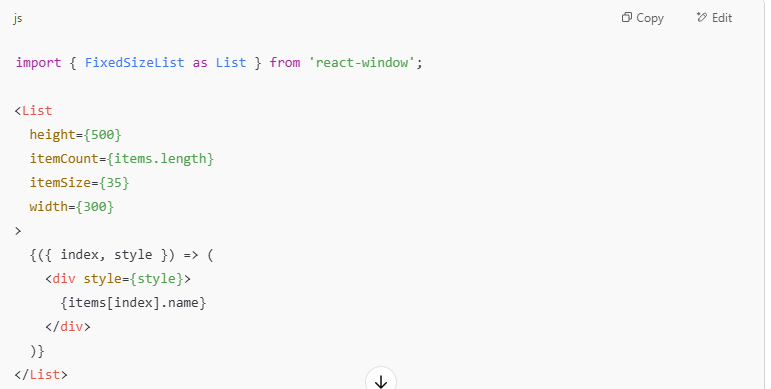Let’s be real—nothing kills a good user experience like a sluggish React app.
A few months ago, I launched a client dashboard that looked beautiful, had solid architecture, and passed all my code reviews… but it felt like molasses. Clicking around had this frustrating delay. Scrolling long tables felt like dragging a rock uphill. At first, I blamed the backend (a classic move), but after digging in, I realized the frontend was the real issue.
If you’re here, chances are you’ve experienced this too. So, let me save you some trial and error: here are the 7 tricks I used to turn my laggy React app into something fast and buttery smooth.
Why Do React Apps Get Laggy in the First Place?
React is fast… until it’s not.
React’s reactivity and virtual DOM give you a lot of power, but that same power can lead to slowdowns when:
- You re-render too much
- You stuff too much into the state
- You load everything at once
- You don’t measure what’s slow
We tend to reach for libraries and patterns without asking, “Do I really need this?”
That’s where I started. With a performance profiler and a whole lot of cleanup.
1. I Started Using React.memo()—and Watched Useless Re-renders Disappear
The first big win came from something I knew about but didn’t use: React.memo().
I had a sidebar component—simple list, nothing fancy. But every time I typed in a search input in the main area, the sidebar re-rendered. Why? Because it was receiving new props with every keystroke, even though the props didn’t change in any meaningful way.
Solution:

This single change shaved off noticeable jank. My CPU usage dropped like a rock when typing fast.
2. I Used Code Splitting with React.lazy() + Suspense
I’ll admit, I used to load everything on page load. Charts, modals, and admin tools—whether the user needed them or not.
Problem:
Initial bundle = 1.3MB 😬
Fix:
I split the “extra” components using React.lazy():

Then I wrapped them in a fallback:

3. I Debounced Expensive Input Calls
This one’s a classic.
I had a search bar fetching results on every keypress. Instant feedback = great UX, right?
Wrong—until your API starts crying and your app lags because it’s handling 10 calls a second.
Fix:
I used lodash.debounce to delay API calls:

If you want a ReactJS development company, check out custom hooks like useDebounce. Either way, it gave my app a breather and made it feel way smoother.
4. I Virtualized Long Lists with react-window
One of my components rendered a table with about 2,000 rows.
It was functional, but try scrolling and it felt like dragging a frozen screen.
What helped:
I swapped it out for react-window:

Now only the visible rows render. Scrolling is smooth. CPU usage is lower. And memory doesn’t explode.
5. I Stopped Overusing Context API – Reactapp
I love the Context API. It’s clean, easy, and avoids prop drilling. But here’s what I learned the hard way: if you cram too much data into a single context, every change triggers re-renders across your entire tree.
What I did wrong:

What I changed:
Split it into multiple, focused providers:

It felt silly at first, but isolating state changes meant fewer unwanted re-renders. My UI felt instantly more responsive.
6. I Finally Used the React Profiler
Look, I avoided the React DevTools Profiler for years. Not because it’s hard—just because I was lazy.
But when I finally opened it up, I spotted something wild: my <Header /> component was re-rendering every time I clicked a button deep in the app.
Turns out, I was passing a new anonymous function down via props. Rookie mistake.
Fix:

Profiler doesn’t lie. Start measuring—don’t just guess.
7. I Removed Bloated Dependencies and Trimmed My Bundle
One of the biggest wins came from checking my bundle size.
Tools I used:
- Webpack Bundle Analyzer
- source-map-explorer
Turns out, I was importing Moment.js, which added ~120KB to my bundle, for one date format.
Fix:
Switched to date-fns, and my bundle dropped like a rock.
Moral of the story? Every kilobyte matters, especially on mobile.
Bonus: Other Tiny Tricks That Add Up
These didn’t make the top 7, but they helped too:
- Enable Gzip or Brotli compression on your server
- Lazy-load images with the
loading="lazy"attribute - Use
useTransitionoruseDeferredValuefor smooth UX under React 18 - Prefetch routes if you’re using frameworks like Next.js
Conclusion: React Is Fast—If You Respect It
React gives you the tools. But performance is your responsibility.
I didn’t need to rewrite my app. I just had to understand where it was hurting and optimize intentionally.
So if your app is dragging, start with these 7 steps. You don’t need magic. You just need a plan.
For the Latest Update – Topbizlists



